
Federico Fellini. German cigarette card.
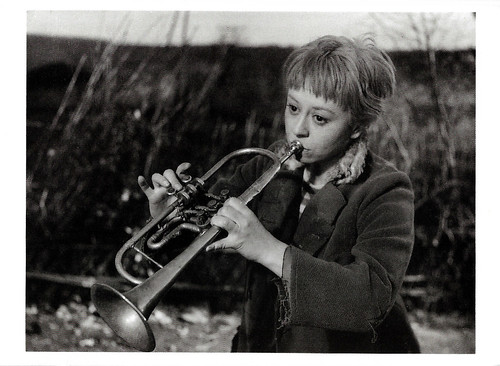
Swiss postcard by Collection Cinémathéque Suisse, Lausanne / News Productions, Baulmes, no. 56518. Photo: Ponti - De Laurentis. Giulietta Masina as Gelsomina in La strada (Federico Fellini, 1954).

French postcard in the Collection Magie Noire by Editions Hazan, Paris, no. 6323. Anita Ekberg in La dolce vita (Federico Fellini, 1960).

French postcard. Photo: Nicolas Tikhomiroff / Magnum Photos. Caption: Federico Fellini in great discussion during the filming of his segment of Boccaccio '70 (Vittorio De Sica, Luchino Visconti, Federico Fellini, Mario Monicelli, 1962), the Roman studios of Cinecitta in 1961.

Swiss postcard by Musée de l'Elysée, Lausanne / News Productions, Baulmes, no. 55108. Photo: Michelangelo Durazzo / AMA, Paris. Federico Fellini directing a scene of the film 8½ (1963).

Swiss postcard by News Productions, Baulmes, no. 55590. Photo: Michelangelo Durazzo / ANA / Musée de l'Elysée, Lausanne, Switzerland. Caption: Federico Fellini directing a scene of the film 8½ (1963) with Marcello Mastroianni and Anouk Aimee.

French postcard by Éditions Hazan, Paris, 1988. Photo: Sam Levin, 1969. Federico Fellini at the set of Satyricon (1969).

Swiss postcard by News Productions, Baulmes, no. 55592. Photo: Michelangelo Durazzo / ANA, Paris. Caption: Federico Fellini during the shooting of the film Casanova. With Donald Sutherland at right.
Observing how Italian films were made
Federico Fellini was born in 1920 in Rimini in the Emilia-Romagna region. His native Rimini and characters there like Saraghina (the devil herself said the priests who ran his school) - and the Gambettola farmhouse of his paternal grandmother would later be remembered in several of his films. His traveling salesman father Urbano Fellini showed up in La dolce vita (1960) and 8½ (1963). His mother Ida Barbiani was from Rome and accompanied him there in 1939.
Fellini's first passion was the theatre, and at the age of 12, he briefly ran away from home to join the circus, later entering college solely to avoid being drafted. He enrolled in the University of Rome. Intrigued by the image of reporters in American films, he tried out the real-life role of a journalist. Additionally, Fellini worked as an artist on fumetti (Italy's illustrated magazines), and occasionally even made his living as a caricaturist at Roman restaurants.
He caught the attention of several editors with his caricatures and cartoons and then started submitting articles. Several articles were recycled into a radio series about newlyweds 'Cico and Pallina'. Pallina was played by acting student Giulietta Masina, who became Fellini's real-life wife in 1943. They remained together until his death.
The young Fellini loved vaudeville and was befriended in 1939 by leading comedian Aldo Fabrizi. Fabrizi recruited Fellini to supply stories and ideas for his performances between 1939 and 1944. The two men worked in tandem on a number of largely forgotten film comedies, among them No me lo dire!/Do not tell me! (Mario Mattoli, 1940) starring Erminio Macario, Quarta pagina/3/4 of a Page (Nicola Manzari, 1942), and Campo de' Fiori (Mario Bonnard, 1943).
When young director Roberto Rossellini wanted Fabrizi to play Don Pietro in Roma città aperta/Rome, Open City (Roberto Rosselini, 1945), he made the contact through Fellini. Federico Fellini worked on that film's script and is also on the credits for Rosselini's Paisà/Paisan (Roberto Rosselini, 1946). Dale O'Connor at IMDb: "On that film, he wandered into the editing room, started observing how Italian films were made (a lot like the old silent films with an emphasis on visual effects, dialogue dubbed in later). Fellini in his mid-20s had found his life's work."
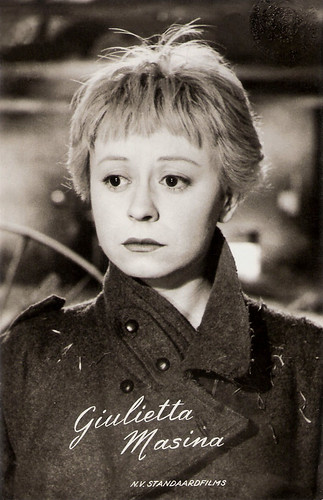
Dutch postcard by Uitg. Takken, Utrecht, no. 3381. Photo: N.V. Standaardfilms. Giulietta Masina as Gelsomina in La strada (Federico Fellini, 1954).

Dutch postcard by Uitg. Takken, Utrecht, no. 3382. Photo: N.V. Standaardfilms. Giulietta Masina in La strada (Federico Fellini, 1954).

Dutch postcard by Uitg. Takken, Utrecht, no. 3383. Photo: N.V. Standaardfilms. Giulietta Masina in La strada (Federico Fellini, 1954).
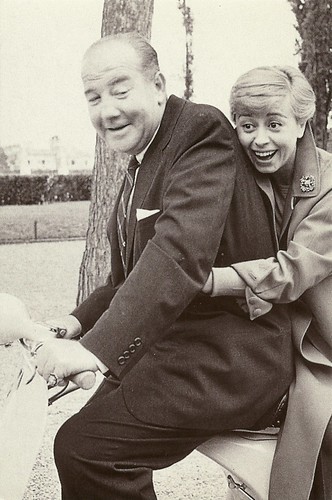
Italian postcard by Ed Graphicarta, Pontedera for Kit Postcards Vespa. Photo: Piaggio. Broderick Crawford and Giulietta Masina together on a Vespa. They played together in Il bidone/The Swindle (Federico Fellini, 1955).

Italian postcard by Rotalfoto, Milano, no. 444. Photo: Titanus. Franco Fabrizi in Il Bidone/The Swindlers (Federico Fellini, 1955).
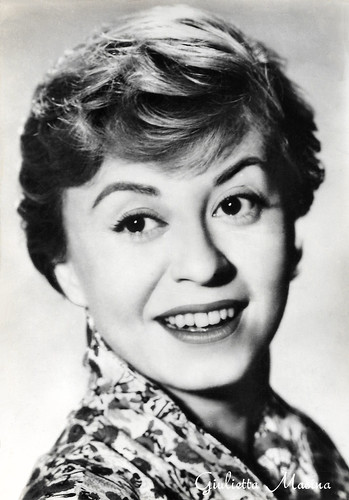
Italian postcard by Rotalfoto, Milano, no. 446. Photo: Titanus. Giulietta Masina in Il bidone (Federico Fellini, 1955).
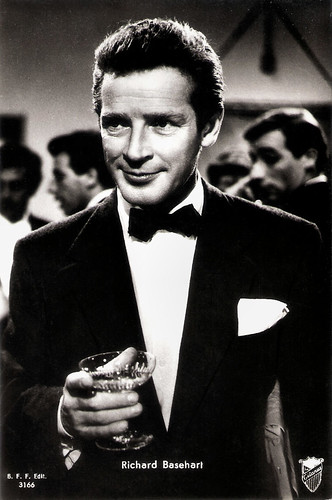
Italian postcard by B.F.F. Edit., no. 3166. Photo: G.B. Poletto /Titanus. Richard Basehart in Il bidone/The Swindle (Federico Fellini, 1955).
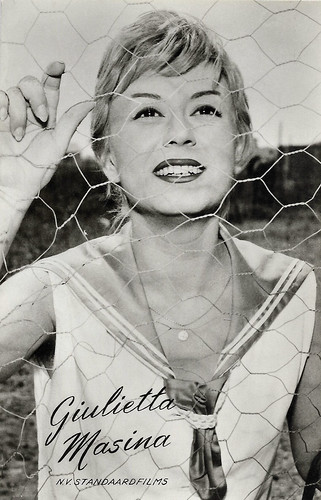
Dutch postcard by Uitg. Takken, Utrecht, no. 3380. Photo: N.V. Standaardfilms. Giulietta Masina in Le notti di Cabiria (Federico Fellini, 1957).
Sex and death in Rome's high society
Federico Fellini collaborated on films by Pietro Germi, including In nome della legge/In the Name of the Law (Pietro Germi, 1949) and Il cammino della speranza/The Path of Hope (Pietro Germi, 1950), and Alberto Lattuda, including Il delitto di Giovanni Episcopo/Flesh Will Surrender (Alberto Lattuada, 1947) with Aldo Fabrizi, and Il mulino del Po (Pietro Germi, 1949) with Carla Del Poggio.
In 1948, Fellini completed the screenplay for Il miracolo/The Miracle, the second and longer section of Rossellini's two-part effort L'amore/Ways of Love (Roberto Rossellini, 1948). Here Fellini's utterly original worldview first began to truly take shape in the form of archetypal characters (a simple-minded peasant girl and her male counterpart, a kind of holy simpleton), recurring motifs (show business, parties, the sea), and an ambiguous relationship with religion and spirituality. He further explored this in his script for Rossellini's Francesco, giullare di Dio/The Flowers of St. Francis (Roberto Rosselini, 1949), featuring Aldo Fabrizi.
In 1950, Fellini made his first attempt at directing one of his own screenplays with the help of Alberto Lattuda, Luci del varietà (Federico Fellini, Alberto Lattudada, 1950), starring Peppino De Filippo, Carla Del Poggio, and Giulietta Masina. The film further developed his fusion of Neorealism with the atmosphere of Surrealism. Fellini then directed the romantic satire Lo sceicco bianco/The White Sheik (Federico Fellini, 1952) featuring Alberto Sordi. The film marked his first work with composer Nino Rota.
Fellini's initial masterpiece, I Vitelloni/Spivs, followed in 1953. The first of his features to receive an international distribution, it later won the Silver Lion at the Venice Film Festival, the first of many similar honours.
The brilliant La strada/The Road (Federico Fellini, 1954) starring Anthony Quinn and Giulietta Masina followed. The film garnered the Silver Lion as well as the Oscar for Best Foreign Language Picture. After helming Il bidone/The Swindle (1955), Fellini and a group of screenwriters (including a young Pier Paolo Pasolini) began work on Le notti di Cabiria/Nights of Cabiria (Federico Fellini, 1957), which also won an Oscar.
Then he mounted La dolce vita/The Sweet Life (Federico Fellini, 1960), the first of his pictures to star actor Marcello Mastroianni. He would become Fellini's cinematic alter ego over the course of several subsequent collaborations. La dolce vita's portrait of sex and death in Rome's high society created a tremendous scandal at its Milan premiere, where the audience booed, insulted, and spat on the director. Regardless, La dolce vita won the Palme d'Or at the Cannes Film Festival and remains a landmark in cinematic history.

French postcard by Editions F. Nugeron, no. Star 136. Photo: Air France / Distribution VU. Caption: Federico Fellini, Giulietta Masina and Marcello Mastroianni, 13 April 1960.

Small Romanian collectors card by Casa Filmului Acin. Photo: Marcello Mastroianni and Anouk Aimée in La dolce vita (Federico Fellini, 1960).

Italian postcard by Bromofoto, Milano, no. 1703. Photo: Cineriz. Magali Noël in La dolce vita (Federico Fellini, 1960). Collection: Marlene Pilaete.

Italian postcard by La Rotografica Romana. Photo: Pierluigi / Riama Film / Cineriz. Anita Ekberg in La dolce vita (Federico Fellini, 1960).

Small Czechoslovakian card by Pressfoto, Praha (Prague), no. S 83/7, 1965. Retail price: 0,50 Kcs. Anita Ekberg and Marcello Mastroianni in La dolce vita (Federico Fellini, 1960).

Small Czechoslovakian card by Presseojo, Praha (Prague), no. 83/9, 1965. Retail price: 0,50 Kcs. Marcello Mastroianni in 8½ (Federico Fellini, 1963).

East-German postcard by VEB Progress FilmVertrieb, Berlin, no. 2391, 1965. Photo: Anita Ekberg in Boccaccio '70 (Federico Fellini, 1962).
Life and dreams as raw material for films
During the 1960s, many films by Federico Fellini were influenced by the work of Swiss psychiatrist Carl Jung and his ideas on the role of archetypes and the collective unconscious. The women who had both attracted and frightened him in his youth and an Italy dominated in his youth by Benito Mussolini and Pope Pius XII inspired Fellini's dreams.
In the 1960s, he started to record them in notebooks, and life and dreams became the raw material for such films as 8½ (Federico Fellini, 1963) or Fellini - Satyricon (Federico Fellini, 1969). With Giulietta degli spiriti/Juliet of the Spirits (Federico Fellini, 1965), Fellini worked for the first time in colour.
After experimenting with LSD under the supervision of doctors, he began scripting Il viaggio di G. Mastorna. Over a year of pre-production followed, hampered by difficulties with producers, actors, and even a jury trial. Finally on 10 April 1967, Fellini suffered a nervous breakdown, resulting in a month-long nursing homestay. Ultimately, he gave up on ever bringing Il viaggio di G. Mastorna to the screen, and his new producer, Alberto Grimaldi, was forced to buy out former producer Dino De Laurentis for close to half a billion liras.
As the decade drew to a close, Fellini returned to work with a vengeance, first resurfacing with Toby Dammitt, a short feature for the collaborative film Tre passi nel delirio/Histoires extraordinaires/Spirits of the Dead (Federico Fellini, Louis Malle, Roger Vadim, 1968). Turning to television, he helmed Fellini: A Director's Notebook (Federico Fellini, 1969), a one-hour special for NBC, followed by the feature effort Fellini - Satyricon/Satyricon (Federico Fellini, 1969). I clowns/The Clowns followed in 1970, with Roma/Fellini's Roma bowing in 1972.
Amarcord (Federico Fellini, 1973), a childhood reminiscence, won a fourth Academy Award in 1974. It proved to be his final international success. He later shot Il Casanova di Federico Fellini/Casanova (Federico Fellini, 1976) with Donald Sutherland, Prova d'orchestra/Orchestra Rehearsal (Federico Fellini, 1979), and La città delle donne/The City of Women (Federico Fellini, 1980), which were less successful.
Fellini turned to publish with 'Fare un Film', an anthology of notes about his life and work. E la nave va/The Ship Sails On (Federico Fellini, 1983) and Ginger e Fred/Ginger & Fred (Federico Fellini, 1985) followed, but by the time of Intervista (Federico Fellini, 1987), he was facing considerable difficulty finding financing for his projects. His last completed film was La voce della luna/The Voice of the Moon (Federico Fellini, 1989) with Roberto Benigni.
In the early 1990s, Fellini helmed a handful of television commercials, and in 1993 he won his fifth Academy Award for a lifetime of service to the film industry. In 1993, Federico Fellini died the day after his 50th wedding anniversary. He was 73 years old.
Jason Ankeny at AllMovie: "One of the most visionary figures to emerge from the fertile motion picture community of postwar-era Italy, Federico Fellini brought a new level of autobiographical intensity to his craft; more than any other filmmaker of his era, he transformed the realities of his life into the surrealism of his art. Though originally a product of the neorealist school, the eccentricity of Fellini's characterizations and his absurdist sense of comedy set him squarely apart from contemporaries like Vittorio De Sica or Roberto Rossellini, and at the peak of his career his work adopted a distinctively poetic, flamboyant, and influential style so unique that only the term 'Felliniesque' could accurately describe it."
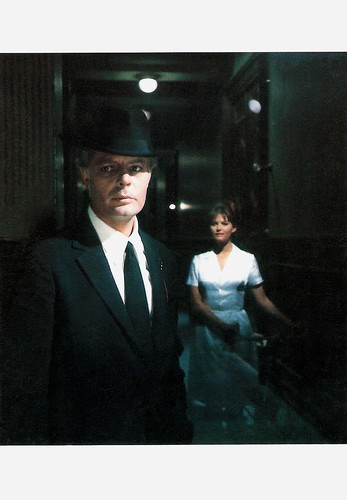
French postcard by Edition La Malibran, Paris, no. MC 38, 1990. Photo: Claude Schwartz. Marcello Mastroianni and Claudia Cardinale in Otto e Mezzo/8½ (Federico Fellini, 1963).

Italian postcard in the Federico Fellini series by Gruppo Prospettive. Film poster for I Clowns (Federico Fellini, 1970) by Rinaldo Geleng.

Costume in Cinecittà, Rome of Magali Noël (Gradisca) in Amarcord (Federico Fellini, 1973).
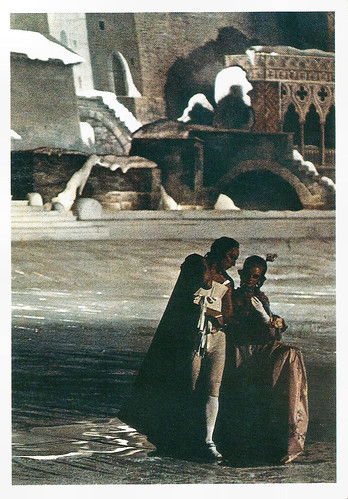
French postcard in the Collection Cinéma Couleur by Editions Le Malibran, Nancy, no. MC 40. Donald Sutherland in Il Casanova di Federico Fellini (Federico Fellini, 1976).

Italian postcard in the Federico Fellini series by Gruppo Prospettive. Photo: F. Pinna / RAM Studio. Donald Sutherland in Il Casanova di Federico Fellini (Federico Fellini, 1976).

German press photo by Tobis. Giulietta Masina in Ginger e Fred (Federico Fellini, 1986).
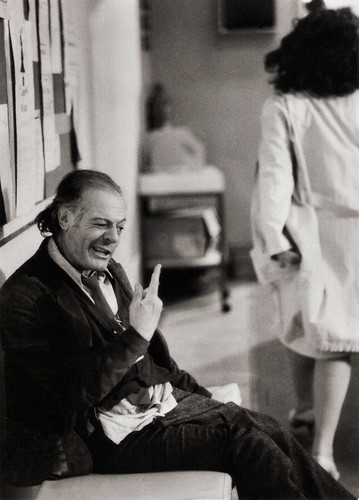
German press photo, no. 5. Photo: Tobis. Marcello Mastroianni in Ginger e Fred (Federico Fellini, 1986).

French postcard by DR. Photo: La Cinémathèque Française. Roberto Benigni and Angelo Orlando in La voce della luna/The Voice of the Moon (Federico Fellini, 1990).
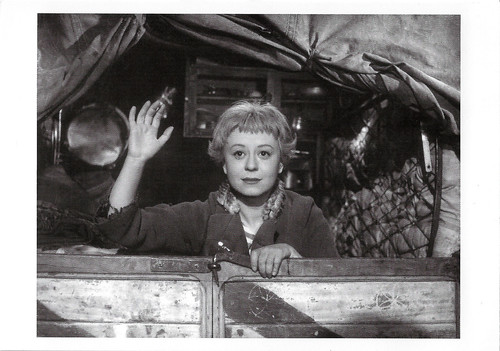
French postcard by DR / Le Cinémathéque Française. Giulietta Masina as Gelsomina in La strada (Federico Fellini, 1954).
Source: Elisabetta Povoledo (The New York Times), Jason Ankeny (AllMovie), Dale O'Connor (IMDb), Wikipedia, and IMDb.
No comments:
Post a Comment